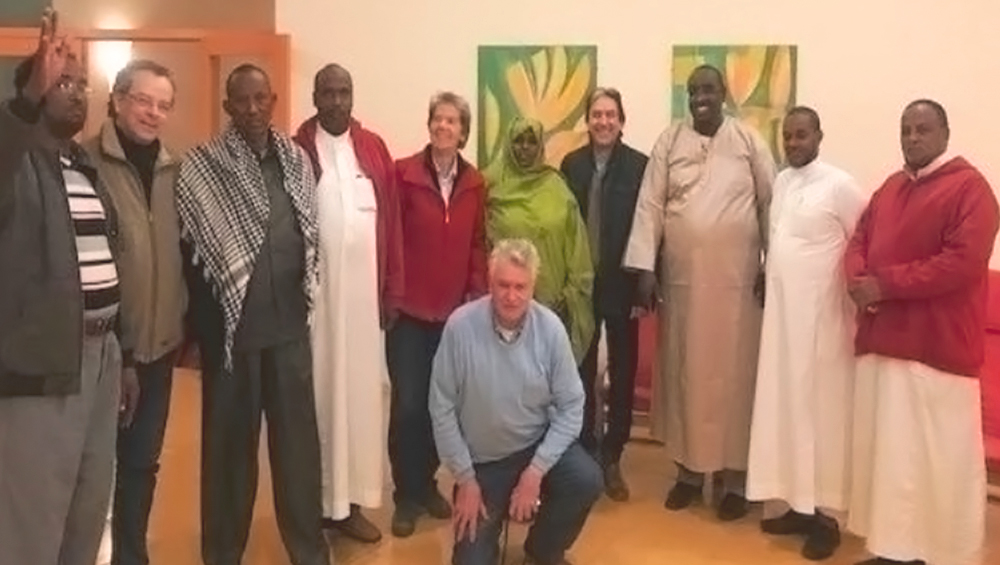At the beginning of this year, a delegation from Kenya visited SEKEM in order to share experiences on building a sustainable community under challenged conditions. The contact had been made by the Dutch SEKEM Friends Association. Hendrik Jan Bakker from the “Vriendenkring SEKEM” and Ad Groeneveld from the Kenyan Wajir Welfare Foundation write about a very inspiring exchange.
When Helmy Abouleish gave a lecture at the Dutch Biodynamic Agricultural Training Center Warmonderhof in 2014, we invited Ad Groeneveld, chairman of the Wajir Welfare Foundation (Stichting Welzijn Wajir) as we had the impression that the SEKEM model could be useful in Wajir County in northeast Kenya. There, the Wajir Foundation works on improving the living conditions of the rural population.
In 1995, Ad Groeneveld found Wajir in desolate conditions: unimaginable poverty, drought, hunger and lack of even the basic supplies. The population, mainly nomads, regularly lost their farming land and cattle due to drought. A major turnaround came in 2013, when all Kenyan districts received forty percent of the national tax returns. This enabled local authorities to determine themselves which poverty reduction projects would be funded.
The meeting at Warmonderhof led to the idea to bring key figures from Wajir into contact with SEKEM. Hence, in January 2018, a delegation from Wajir visited SEKEM – among them the district minister of agriculture and members of his staff, entrepreneurs, and the contact person for community building of Wajir Foundation. The visit was funded by the Dutch CCHO Foundation.
The SEKEM community had prepared a comprehensive program for the guests in order to make them familiar with all agricultural aspects as well as the community building programs. They Wajit-team reacted very enthusiastic and were interested in knowing from almost all trees, shrubs and plants whether they could be useful in their own region – seeds were collected to grow at home.
Hence, for instance, the orange plantations caught the guest’s attention. However, they understood quickly that these trees need a lot of care and that date palms might be more suitable for the northeastern region in Kenia. Other learning points were the planning and marketing of agricultural production, agroforestry, crop rotation, and finally the cooperation with contract partner farmers.
A big eye-opener was the compost production in SEKEM, “the brown gold” of the desert. A good compost layer reduces the water requirement of the soil and also tolerates salinized water better, criteria that are of high importance especially in dry areas.
Seeing what has been achieved by someone who started with nothing at all, showed the team how social entrepreneurship and good cooperation with the local government benefit the community development. By investing part of the revenues in education, healthcare, infrastructure and culture, the community welfare can be lifted to a higher level and thereby contribute to further development again.
In this context, the Kenyan visitors have been very impressed by the loving and thoughtful care for handicapped children in SEKEMs special education school. In Wajir, this kind of care does not really exist. There is an institution for children with disabilities, but it hardly functions. Although it was not on the agenda, it became an important topic of conversation and new ideas on reviving the large grounds of this clinic started to emerge.
In the meantime, a project plan for biodynamic farming has been drawn up for twenty out of over 350 farmers in cooperation with the Kenya Institute of Organic Farming. The twenty pioneers are then supposed to share their knowledge with the other farmers. The project will also focus on community building, human rights, and gender equality. Around 6000 Euro will be invested by the district government. More than 13 000 Euros are still being sought for funding. It seems that the whole team became aware that the circumstances of Wajir in 2018 are much more favorable than they had been for Ibrahim Abouleish in 1977 and hence they concluded: “what had been achieved in SEKEM, must be doable for us in Wajir too”.
Ad Groeneveld (Stichting Welzijn Wajir) and Hendrik Jan Bakker (Vriendenkring SEKEM)
Copyright Photo: Vriendenkring SEKEM
SEKEM in Brazil: Sustainable Engagement without Borders
Opportunities for Youth in Egypt and the Netherlands

